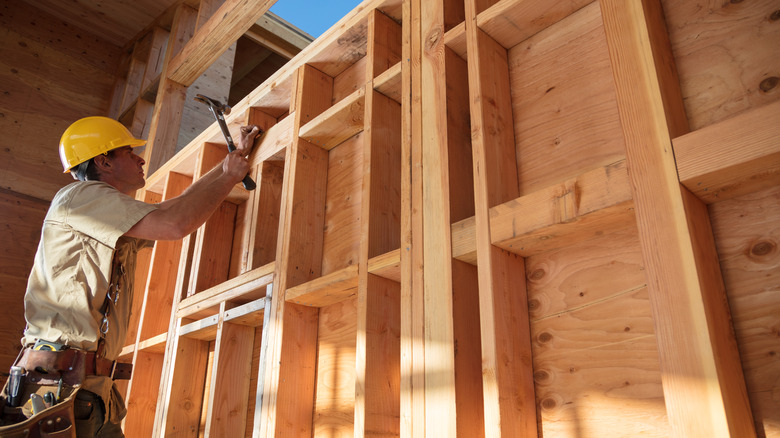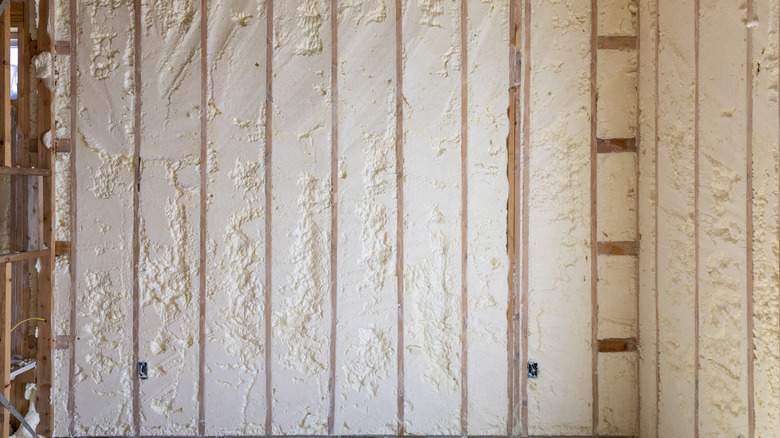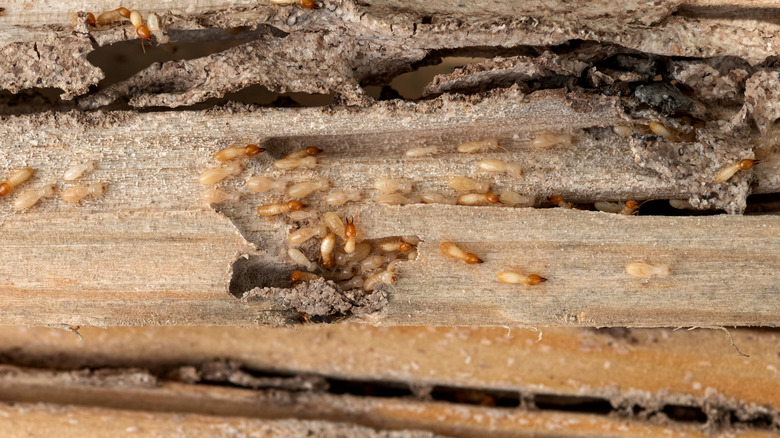Weighing The Pros And Cons Of Using A Wood Foundation For Your Home
Is your architect or builder recommending a wood foundation for your house? Wood foundations — also known as Permanent Wood Foundations, or PWFs — are foundations consisting of below-grade walls made of pressure-treated wood that sit atop a granular or concrete base. These foundations gained some popularity in the 1960s, after technological advancements made it possible to protect the wood from insects and moisture. The key benefit of wood foundations is that they're easier to build, especially on sites with difficult access, or in remote locations. They're also warmer and often dryer than their concrete peers.
However, wood foundations come with a series of disadvantages, which are often a divisive issue among architects, structural engineers, and general contractors (GCs). Unless they're built extremely well, and you properly grade your yard to prevent moisture accumulation, these foundations can still sustain irreparable moisture damage. The type of destruction these foundations can suffer at the hands of ground moisture is much more severe than what you'd see from a foundation built with concrete. To help you make an informed decision, we explain each of the key pros and cons of wooden foundations in greater detail below.
Benefits of using a wood foundation when you build your home
Ease of construction is one of the primary reasons developers or homeowners will opt for a wood foundation. When you pour concrete footings, foundation walls, and slabs, you need specialized crews to form, place, and finish the concrete. In contrast, the same framing crew building the above-grade portion of your house can easily tackle a wooden foundation. That means one less trade to hire and manage for your GC — or you, if you're an owner-builder. What's more, the carpenters will not get delayed by inclement weather conditions. Whether it's hot or cold outside, they can press on with a wood foundation. Meanwhile, concrete doesn't cure well in extremely cold and hot conditions, so bouts of extreme weather can disrupt your construction schedule if you're laying a concrete foundation. PWFs are also the default alternative to concrete if you're building in an off-the-grid, remote location that's too far from a concrete supplier. Crucially, a wood foundation can potentially set you back about $10,000-$15,000 less than a concrete one.
The benefits of a wood foundation extend beyond ease of construction. As the dweller, you'll find that a wooden foundation is more comfortable. Mainly, that's because concrete foundations get significantly colder during the winter months than their wood counterparts. Also, concrete foundation walls are susceptible to condensation, which can cause moisture to accumulate on the foundation walls and eventually cause damage. Being warmer, wooden foundation walls do not lend themselves to condensation in the same manner, so you have one less source of moisture to worry about. Wooden foundations will also make it easier to carry out electrical or plumbing updates, since drilling wood is simpler than drilling reinforced concrete.
Drawbacks of building a home with a wood foundation
Despite their many benefits, wood foundations are not without their downsides. The most important one lurks in the material itself. Although PWFs are made with pressure-treated wood that's made to resist both pest and moisture damage, the resistance can wear off or fail over time. Without you knowing at first, the foundation can then undergo a destructive termite infestation or begin suffering from rot — a type of fungus that spreads and deteriorates wood.
Because of the above concerns, a wood foundation should be kept as dry as possible through an effective grading design that channels all rainwater away from the walls. However, there isn't much you can do if the water table rises over time and subjects the wood to underground moisture. And if the foundation becomes surrounded with water-laden soil, joints that were not properly sealed may develop leaks — one of the critical signs that there is a problem with your foundation. What's more, the hydrostatic pressure can cause the wooden walls to buckle. Now, concrete foundations can also experience damage due to pressure and moisture, which is why you need to waterproof a basement. But in concrete walls, this damage usually manifests as cracks, which are typically easy enough to patch. Rotting or buckling wood comes with no easy fixes, so if your wood foundation develops these issues, replacement will likely be the only option. To avert many of these issues, the installation of a wood foundation would have to be executed perfectly, without any flaws that give moisture an upper hand over the wooden foundation. Alas, that's not something you'll have much control over unless you're an expert GC overseeing the build yourself.


